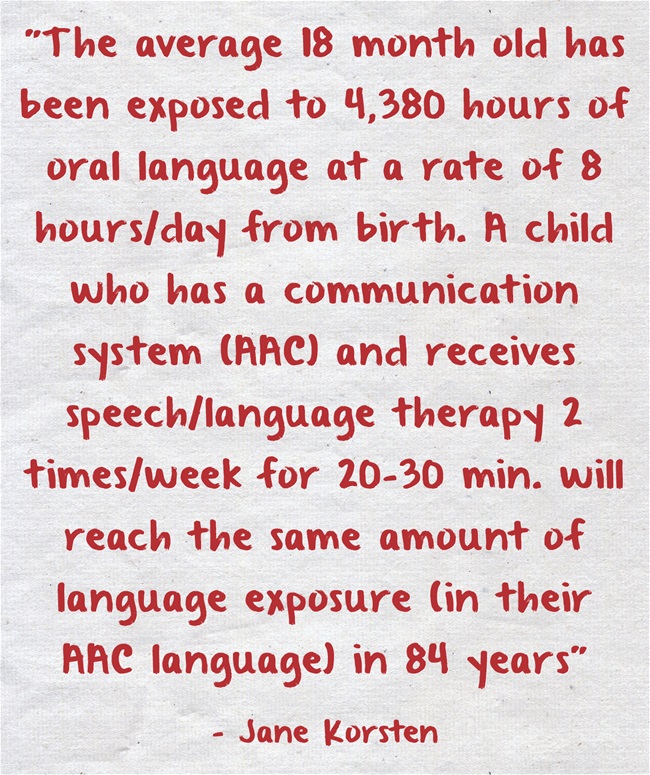AAC: It takes time (and work)
Verbal speech is a tool. One that takes years to develop. In typically developing children, it can take 6-8 years to master all of the speech sounds (and consonant blends/clusters) in the English language. The speech mechanism (the muscles and parts of the mouth/body used to produce speech) develops over time and with practice. It is a tool - only one of the tools - we use to convey our thoughts, feelings, stories, wants and needs. Use of language must also be learned, developed and honed over many years. Take a moment to consider the following:
- We spend one entire year immersing our babies in spoken language before we expect them to start verbalizing any real words. And after the first 12-18 months, we only expect 3 to 20 real words (and even then they are not produced completely clearly).
- After two years of being immersed in spoken language we are expecting two word combinations from typically developing children - again, not produced completely clearly.
An AAC (augmentative-alternative communication) system is a tool. Just like verbal speech, it provides a means to express thoughts, feelings, stories, wants, and needs. Just like it takes years to master the "speech tool" and to use language, it takes years to learn to use the "AAC tool". Putting an AAC system in front of a child is not going to magically make them competent communicators (although it can feel magical when they start communicating!). It takes time, learning, trial & error, practice, and an immersion in the new AAC language/system to develop the skills to use an AAC system for communication. We put the time and effort in with children learning to communicate via their "speech tool". We must do the same for children learning to communicate via their "AAC tool".

You might also like the following post:
 Tuesday, October 7, 2014 at 10:09AM
Tuesday, October 7, 2014 at 10:09AM  Post a Comment →
Post a Comment →  AAC,
AAC,  AAC Awareness Month | in
AAC Awareness Month | in  AAC
AAC
Reader Comments